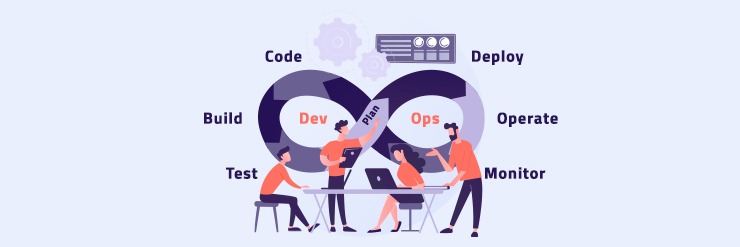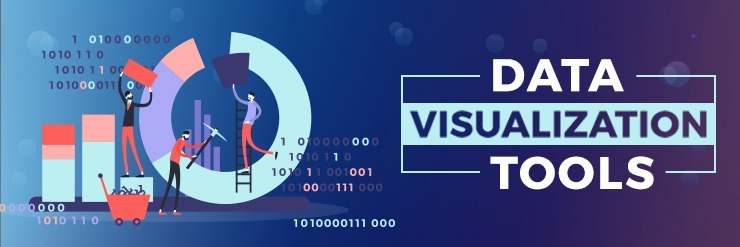What is Continuous Integration?
The process of automating the integration of code changes from several developers or contributors into a single software project is referred to as continuous integration. It is a basic DevOps practice that enables the development team to continually merge code changes into a common repository to run automated builds and tests. Continuous integration automated tools help to assess the new code’s accuracy before integrating it to the previously added code.
Continuous development began as a software development methodology and extended into an integration system. It focuses on making updates continuously, bit-by-bit, instead of improving software in one large batch. This practice enables the company to deliver the software code to customers as soon as it gets completed and tested.
Key Goals of Continuous Integration
Continuous integration helps to achieve the best practices in the development. The key goals include identifying and addressing bugs at the initial stage to improve software quality and reduce the cost and time to assess and release new software updates.
The Benefits of Continuous Integration
Continuous integration is helpful for developers in many ways. The absence of continuous integration can bring several inadequacies in the development process. Developers would have needed to coordinate manually during the development and launching process. Similarly, the communication grows to the other departments of the organization. For instance, the production team connects with the sales and operations for various needs. In comparison, the manager is typically held responsible for launching features and fixing errors sequentially.
Overall, complex coordination is required to develop a final product. You can avoid tangles and miscommunication, leading to an extra cost and time, by using continuous integration. Since the developer has to be more careful and thoughtful about the integration, it leads to slower code delivery with increased chances of failure. When we don’t use CI, there are high chances that such risks grow exponentially as the size of the codebase and the development team increase. Here are some key benefits that can be yield by using continuous integration.
Improve Developers Productivity
The development team can improve its productivity with continuous integration. The developers are no longer required to do manual tasks while using CI. It helps them stay motivated and reduces the chances of errors and bugs to extended to customers.
Reduced Errors and Manual Tasks
CI requires teams to standardize processes and apply best practices, so they can be easily repeated. Teams can then automate repeatable processes, reducing manual work and cutting down on the opportunity for human error. As teams focus less on manual tasks, they can devote more time to strategic initiatives and other high-value projects.
Find and Address Bugs Earlier
Continuous integration allows your software to go under frequent testing. This way, you can catch on bugs in earlier stages before letting them grow and turn into bigger obstacles. Identifying and addressing bugs at the initial stages can help a lot to make your product a win.
Deliver Updates Faster
With continuous integration, you can deliver updates to your clients more frequently and consistently.
High-Quality Releases
Continuous integration allows continuous automation and test updates to ensure reliable and high-quality releases with fewer bugs and errors. This helps to reduce the effectiveness. For end-users, this improves quality and drive business growth in the long run.
Reduced Costs
Continuous integration also reduces the additional organizational cost. Since it reduces manual tasks and chances of errors, it results in offering a high quality of service with enhanced productivity. Similarly, when the code is integrated and deployed in the same manner – automatic testing across environments – the quality is improved, and the cost is decreased.
It reduces costs because businesses don’t need to spend time and resources resolving bugs and errors to a greater extent, and rather they got identified and resolved at the initial stages.
What is Continuous Deployment?
Similar to continuous integration, continuous deployment focuses on the quality of your product. Continuous deployment is specifically focused on the automated tests of the releases in software production. It is referred to as the practice of releasing the high-quality build to users.
Adopting continuous integration and continuous deployment via using the best continuous integration tools can help reduce risks in the project. It catches bugs, and errors quickly and rapidly move to the working software.
Low-risk releases enable you to adapt to the business requirements and user needs. By allowing you to have enhanced communication and collaboration between operations and delivery, you can boost improvement in the overall performance and turn the release process into a plus for your business.
What Is the Difference Between Continuous Integration & Continuous Deployment?
As we mentioned, continuous integration and deployment are closely related to one another. However, slight differences are there. The integration process is more focused on the code quality and helps developers ensure that the quality is up to the mark. Before merging the code into the master build, it’s considered the best practice in continuous integration to check for the code quality. On the other hand, continuous deployment focuses on the relevancy and functionality of master build into the real world.
Connect with AppVerticals to start developing your product with the best software development practices.
Feel Free to Reach Out
contact us







